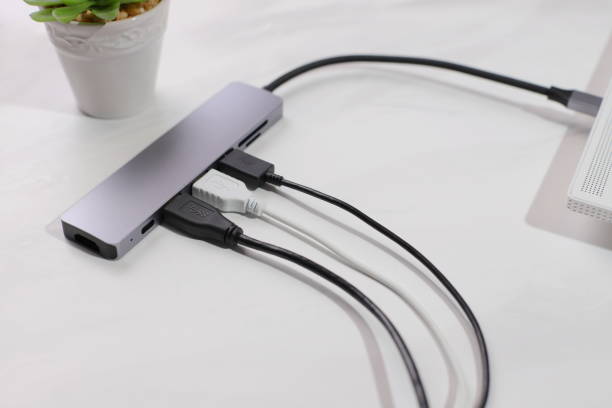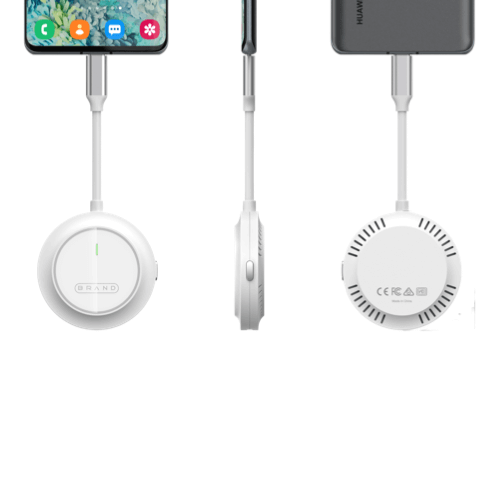In the age of hybrid work and high-resolution displays, docking stations have become essential for professionals managing multiple screens and peripherals. However, a common question persists among users: Does using a docking station cause display responsiveness delay? Understanding the science behind video transmission and interface design is key to separating myth from fact.
1. The Core Function of Multi-Display Docking Solutions
A multi-display docking solution acts as a centralized hub that extends a laptop or desktop’s connectivity. By integrating interfaces such as HDMI, DisplayPort, and USB-C, it enables multiple monitors, external drives, and input devices to operate simultaneously. The design goal is to optimize data throughput without introducing lag.
Modern docking stations use high-bandwidth protocols, ensuring seamless video transfer between the computer and display. Devices equipped with USB-C or Thunderbolt 4 ports can deliver up to 40Gbps, transmitting 4K or even 8K video with minimal latency. The system is engineered to prioritize real-time responsiveness across multiple screens.
2. Understanding Perceived Display Delays
When users report display delays, they often refer to the time difference between an input action—such as mouse movement—and the visual response on the monitor. With a multi-display docking solution, this latency typically originates not from the dock itself, but from bandwidth allocation or driver configurations.
A properly designed docking station incorporates integrated video chips or pass-through circuits that reduce signal conversion stages. However, low-quality or poorly shielded cables can cause data loss, which may appear as a slight image stutter or delay. Maintaining optimal cable quality and firmware updates significantly reduces this effect.
3. Bandwidth Distribution and Video Encoding
Docking stations must manage multiple data channels at once—video, power delivery, audio, and USB data. When all ports are fully active, bandwidth prioritization becomes essential. High-end docking solutions handle this using dedicated data controllers that dynamically balance transmission loads.
For example, if two 4K displays are connected simultaneously, the system uses Display Stream Compression (DSC) or Multi-Stream Transport (MST) to efficiently transmit image data without noticeable frame delay. The outcome is smooth, synchronized video playback even under intensive workloads.
4. The Role of Hardware and Operating System Drivers
Another factor affecting responsiveness is the system’s GPU and OS driver compatibility. Even with an advanced docking solution, outdated graphics drivers may fail to interpret the video signal optimally, resulting in slight frame latency.
Manufacturers of premium multi-display docking solutions often certify compatibility with major operating systems and GPU brands. They also issue regular firmware and driver updates that fine-tune latency performance. Thus, users who experience display lag should first ensure their systems are updated before assuming hardware faults.
5. Cable Standards and Connection Protocols
The connection protocol determines data transfer efficiency. USB-C with DisplayPort Alt Mode and Thunderbolt 3 or 4 offer direct video channel access, minimizing conversion delays. In contrast, HDMI-over-USB adapters introduce additional encoding steps, which may slightly impact refresh rates or color depth.
High-performance multi-display docking solutions are designed to support direct digital passthrough, bypassing extra conversion layers that cause milliseconds of delay. This engineering ensures that visual responses remain consistent with native display output.
 6. Power Delivery and Signal Stability
6. Power Delivery and Signal Stability
Power management is another critical element influencing display stability. Inadequate power delivery to the dock or connected monitors can lead to flickering or momentary delays. Advanced docking solutions integrate smart power management chips that regulate current distribution and prevent voltage fluctuation.
By maintaining signal stability, these systems ensure consistent low-latency display transmission—an essential requirement for professional designers, gamers, and video editors.
7. Multi-Monitor Configurations and Real-World Performance
In professional environments, multi-monitor docking setups improve productivity but demand significant data handling. When configured correctly, they allow for simultaneous 4K or 8K output with latency below human perceptible thresholds.
Real-world tests reveal that well-optimized docking stations achieve response delays under 5 milliseconds, a figure imperceptible during regular tasks such as browsing, designing, or video playback. These results highlight how engineering precision and interface optimization negate display lag concerns.
8. How to Minimize Any Potential Display Lag
For optimal display performance, users can follow a few practical steps:
Use certified Thunderbolt or USB-C cables rated for high data transfer speeds.
Keep the firmware and GPU drivers updated.
Avoid chaining multiple adapters or low-quality hubs.
Connect monitors directly to the dock’s dedicated video ports.
Ensure the dock is powered by its original supply, not the host laptop.
These practices maximize the performance of multi-display docking solutions, maintaining real-time responsiveness.
Conclusion
A well-engineered multi-display docking solution does not inherently cause display responsiveness delay. Instead, it enhances productivity by centralizing connections, optimizing bandwidth, and stabilizing video signals. Most latency complaints result from cable limitations or software misconfigurations, not from the docking hardware itself.
As technology continues to evolve, docking stations are becoming faster, smarter, and more reliable. With proper configuration and compatible hardware, users can enjoy instant, fluid multi-monitor performance—proving that modern docking solutions are not just convenient, but performance-driven tools for the digital era.



